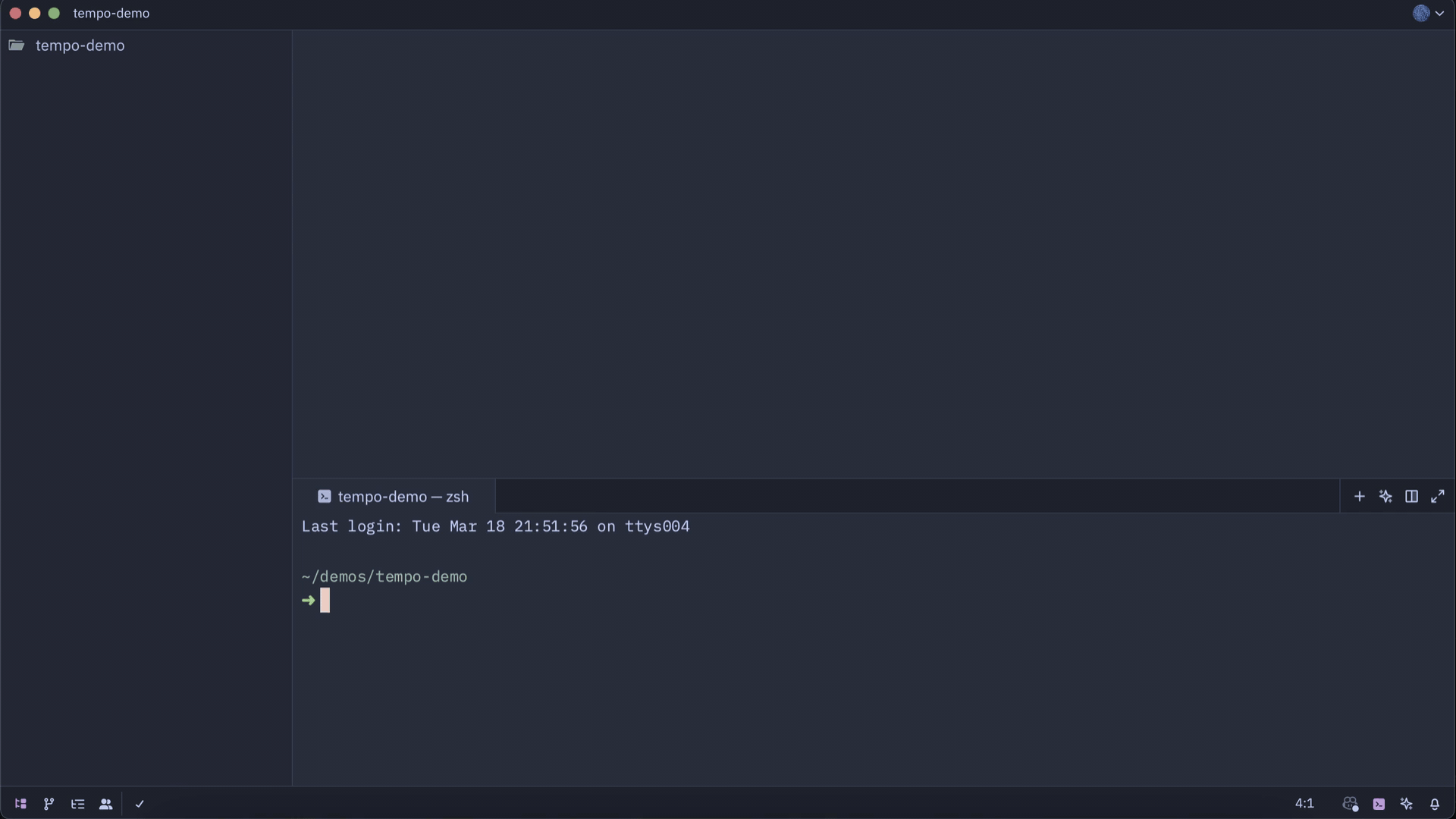Why Tempo?
Tempo was created to improve developer experience when working with templ by:
- Keeping CSS/JS cleanly separated while auto-injecting them at build time
- Making scaffolding frictionless (no Node or Plop.js)
- Preserving existing tooling support (syntax highlighting, linters, etc.)
Start fast, stay productive.
The Problem
While building a UI component library in Golang with templ, I deliberately chose to use plain CSS and vanilla JavaScript. This decision introduced two key challenges:
- Managing CSS & JS assets – While
templexcels at Go/HTML templating, it lacks a structured approach for handling standalone styles and scripts. Although you can write CSS and JS directly within.templfiles, this comes at the cost of losing native tooling benefits such as syntax highlighting, formatting, and autocompletion. As a result, maintaining styles and scripts efficiently while keeping them separate from.templfiles required a better workflow. - Scaffolding new components – Every component followed the same folder structure, but manually copying files and folders was inefficient. I initially used Plop.js, but it required setting up a full Node.js project.
The Solution
tempo solves both problems natively in Go, eliminating the need for Node.js while providing a structured, opinionated workflow for component and asset management.
✨ Preserving the Developer Experience
With tempo, CSS and JS files remain untouched during development, allowing developers to continue using their preferred tools:
- Linters & formatters (e.g., Prettier, ESLint, Stylelint)
- IDE features like syntax highlighting, error detection, and inline code suggestions (e.g., in VSCode).
- Existing workflows remain intact—ensuring a familiar, efficient experience.
When you run tempo, CSS and JS files are injected into .templ components automatically, but the original source files remain unchanged. This approach preserves developer productivity while enabling seamless integration into templ-based projects.
🖼️ Visual overview
A quick look at how
temposyncs assets and scaffolds components:
